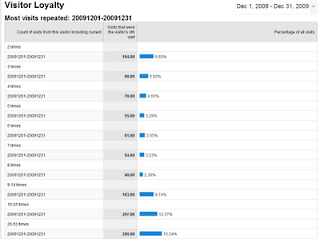Most likely, you have all heard that high bounce rates are bad. Some people even believe that bounce rate affects your sites search engine rankings. Meaning higher bounce rate is bad for your organic rankings. I am not sure if that actually is true or not but it does show you that most analysts consider high bounce rates as a negative indicator of a site’s health.
Are high bounce rates really bad? Generally they are but you have to consider the other factors and put everything in context before you can come to that conclusion. In my post “All that bounces is not Bad”, I showed you that there are cases when the bounces are not really bad.
One of the causes of high bounce rate is the entry via “destination page”. A destination page is a page that provides the information that the visitors are looking for.
Destination pages are going to have higher bounce rate and no matter how hard you try you might not be able to move the needle on those pages. For this reason, most of the news sites, content sites, product info, support site, portals etc, are going to have a higher bounce rate than the ecommerce or lead generation sites. Visitors come with a mission e.g. to read an article, news, get information etc. and once they read the article they go back to where they came from (think search, twitter, facebook etc.).
Let me show you an example of a page that has a very high bounce rate. The page in this example has a bounce rate of 72%, which means that the page just sucks. Do you agree??? Let’s put this page in context and then evaluate.
Firstly, the page in question provides very specific information and is refreshed every week, sort of like a weekly horoscope page. To understand the visitor behavior I created a segment of visits that entered this page and then bounced.
As shown above 26.65% visits are “New” which means that 73.35% of visits had come to the site in past. That’s a lot of returning visits. It tells me that a lot of visitors are already familiar with the site and are coming back with specific mission and then bouncing.
To further understand how loyal these returning visitors are, I created another segment by adding additional criteria to just focus on the returning visits.
Over 90% of the visitors that bounced have come 3 or more times to the site. About 67% of these returning visitors have come 9 or more times on this site. About 30% have visited more than 50 times since they were first cookied.
About 90% of the visitors visited the site within last 7 days. Not bad. Since this page does not change within 7 days, it appears they might have visited the other pages on the pages on the site. However I have not found a way to prove that in Google Analytics.
What is this data telling me? It is showing me that the visitors that are bouncing off of this page are actually pretty loyal and are coming back to the site quite often. So what if they bounced in their latest visit? Now the 70% bounce rate does not seem that bad. What do you think?
So what’s the lesson? Don’t just look at the bounce rate and panic. Look at the other data points and then put everything in context before you jump to any conclusions. Remember “All that bounces is not bad”.
Comments?
New Job: Analytics Associate at Huge (Brooklyn, NY)
Looking to fill your Web Analytics or Online Marketing position?
Post your open jobs on Web Analytics Job Board
--------------------------------------------------------------------------




No comments:
Post a Comment